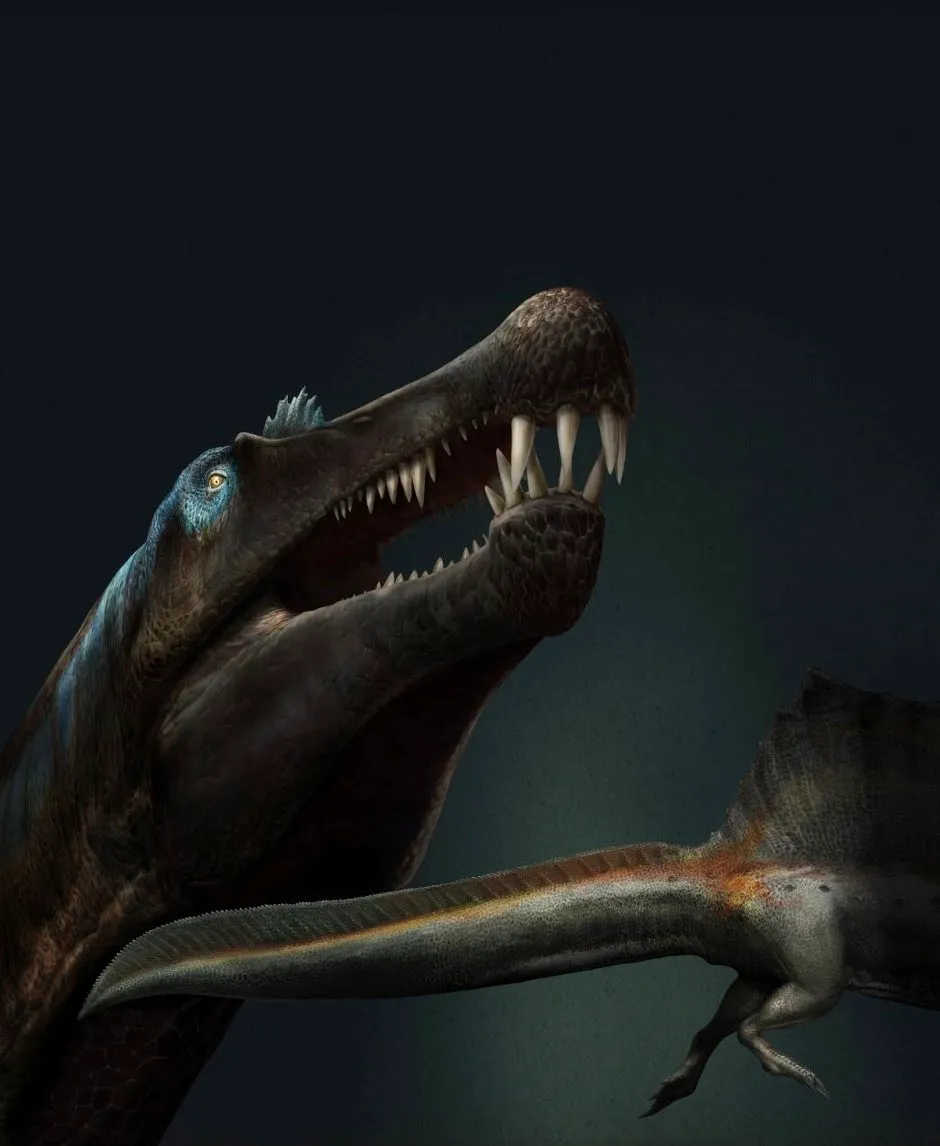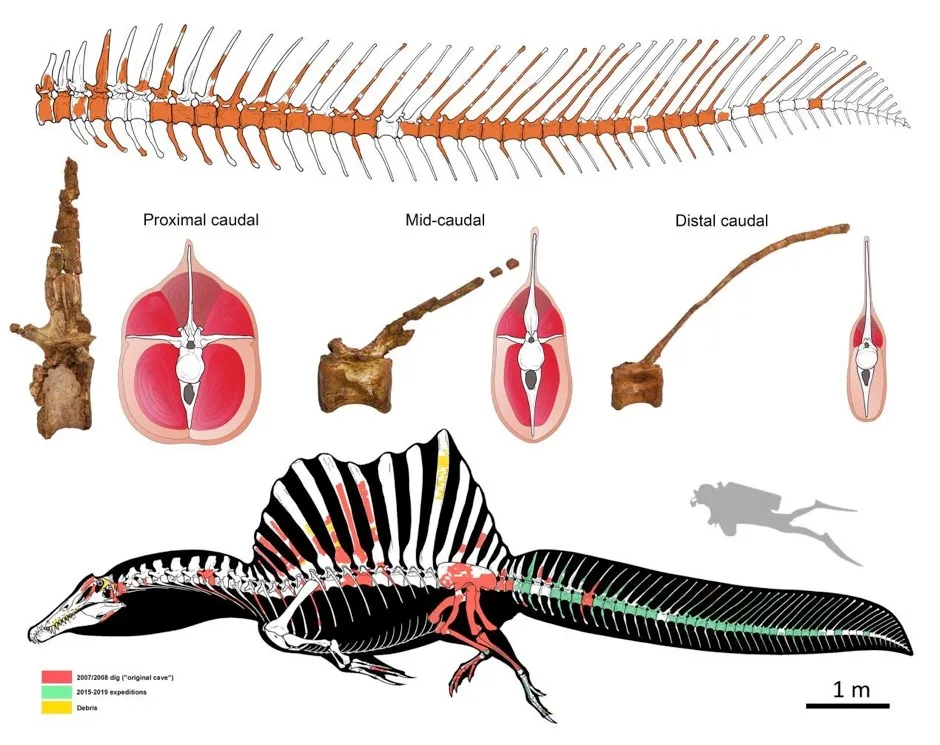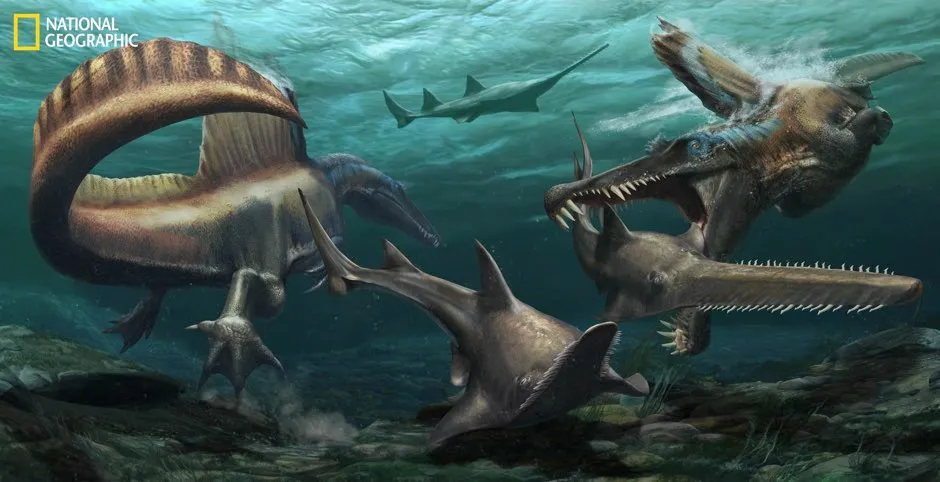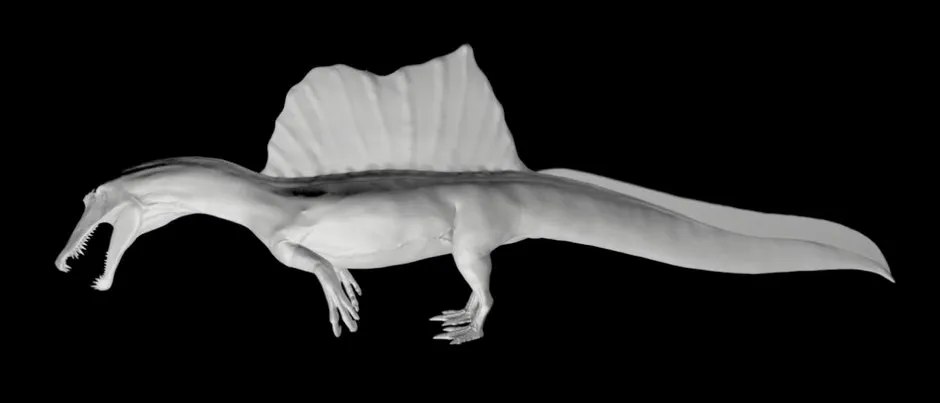The newly-discovered tail fossil of the first “river monster” dinosaur shows the giant predator was a powerful swimmer and the first known to have lived in the water.
The six-tonne Spinosaurus aegyptiacus prowled the rivers that flowed through the Sahara desert 100 million years ago, living and catching its prey in the water, according to the new research.
The study on the tail, which was unearthed in southern Morocco, was carried out by an international team including from the universities of Portsmouth and Leicester, and supported by a grant from the National Geographic Society.

The University of Portsmouth said: “Until now it was believed that dinosaurs lived exclusively on land, but the newly discovered tail of Spinosaurus aegyptiacus, a giant predator, shows that it was actually well adapted to an aquatic lifestyle.
“The 15-metre-long, six-tonne predator was, in fact, a powerful swimmer propelled by a huge fin-like tail, which hunted down its prey in vast river systems that flowed through the Sahara desert 100 million years ago.
“It is the first time that such an adaptation has been reported in a dinosaur.”

Dr David Unwin, reader in palaeobiology at the University of Leicester, said: “The Spinosaurus’ fin-like tail is a game-changing discovery for us that fundamentally alters our understanding of how this dinosaur lived and hunted – it was actually a ‘river-monster’.
“As well as its tail, many other features of this dinosaur, such as the high position of the nostrils, heavy bones, short legs, and paddle-like feet point to a life spent in the water rather than on land.
“Not only did dinosaurs dominate the land and take to the air as birds, they even went back into the water and became the top predators there as well.”

The Portsmouth spokeswoman said: “The team found that in place of a stiff tapering tail, typical of other theropod dinosaurs such as the Tyrannosaurus Rex, the tail vertebrae of Spinosaurus had extraordinarily long spines that supported a large, highly flexible, fin-like tail comparable in shape to that of a crested newt.
“After preparing all the fossils, the team used photogrammetry to digitally capture the anatomy of the tail.
Read more about dinosaurs:
- What if the dinosaurs had survived?
- The Bone Wars: how a bitter rivalry drove progress in palaeontology
- How brains, not brawn, helped the Tyrannosaur become king
“To quantitatively assess the performance of the tail, a team of Harvard researchers made a flexible model of the tail and attached it to a robotic system that mimics swimming movements.
“They then compared the swimming performance of the Spinosaurus tail to model tails from other animals, including dinosaurs, crocodiles and newts.
“The results are fully consistent with the idea of a truly water-dwelling, tail-propelled, ‘river monster’.”

Professor David Martill, professor of palaeobiology at Portsmouth, said: “One thing that still puzzles me though, is why only Spinosaurus became aquatic among the dinosaurs. Why are there no aquatic iguanodons, or stegosaurs?”
Paleontologist Dr Nizar Ibrahim, of the University of Detroit Mercy and a National Geographic Explorer, said: “This discovery is the nail in the coffin for the idea that non-avian dinosaurs never invaded the aquatic realm.”
The research was published in the journal Nature.
Reader Q&A: What was the first dinosaur?
Asked by: Adam King, Huddersfield
As palaeontologists uncover more fossils around the world, we keep finding new dinosaurs from the Triassic Period: the first interval of dinosaur history.
Currently, the oldest known dinosaurs come from Argentina, and they’re about 231 million years old. There are several dinosaurs of this age found together, including the horse-sized meat-eater Herrerasaurus, the dog-sized meat-eater Eodromaeus (a distant relative of T. rex), and several dog-to-bear-sized cousins of the giant long-necked sauropods, including Panphagia and Eoraptor.
The fact that so many dinosaurs, with different diets and sizes, lived at this time tells us that dinosaurs were already diversifying soon after they evolved from other reptiles. But none of these dinosaurs were giants, and none were at the top of the food chain. Those species would come later, during the Jurassic Period.
Read more:
